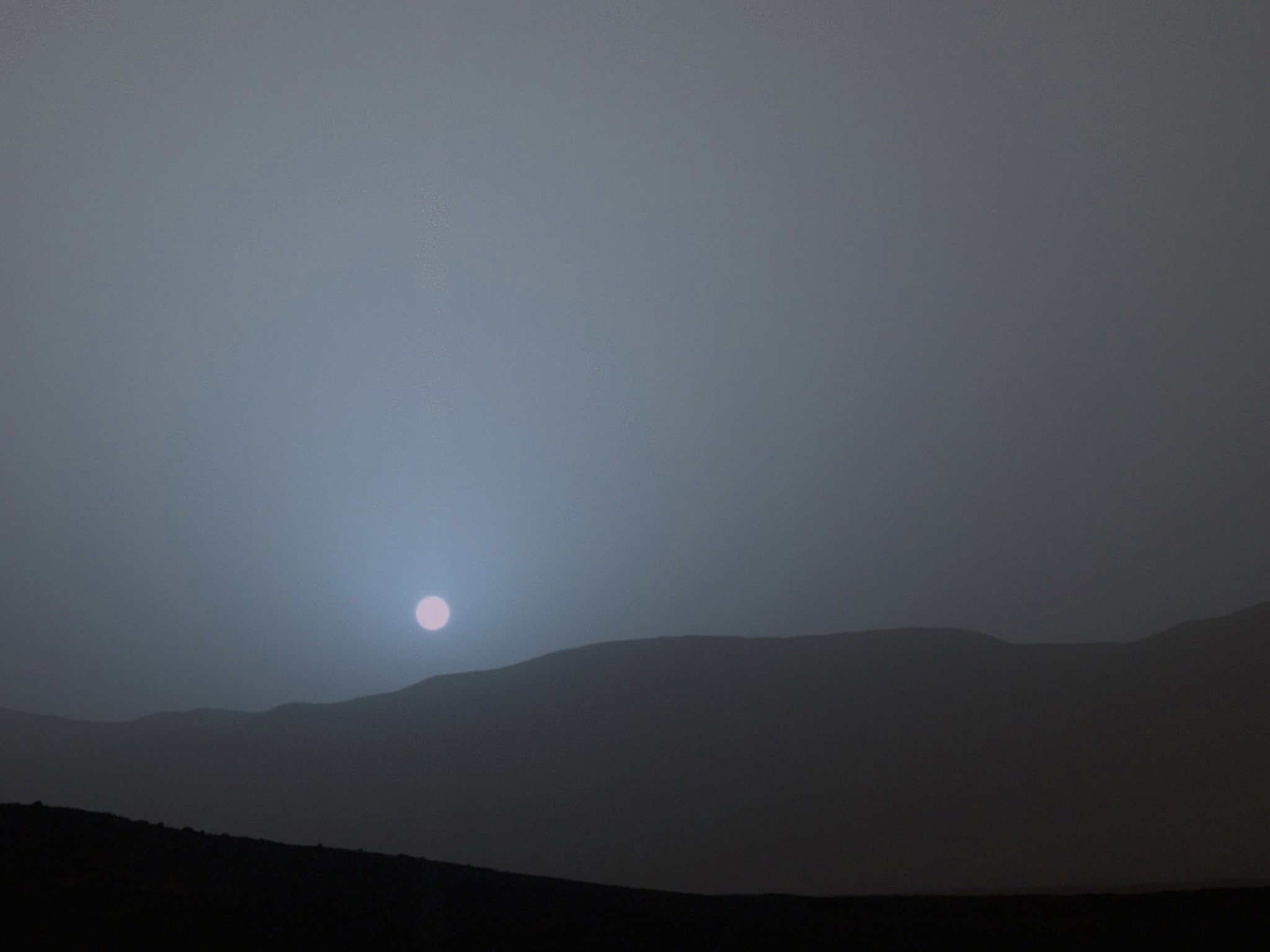Sunset on Mars: Curiosity rover snaps first colour pictures of red planet’s blue sunset
On the rover’s 956th Martian day, it took stunning first images which will be used to work out how dust moves about the planet

Your support helps us to tell the story
From reproductive rights to climate change to Big Tech, The Independent is on the ground when the story is developing. Whether it's investigating the financials of Elon Musk's pro-Trump PAC or producing our latest documentary, 'The A Word', which shines a light on the American women fighting for reproductive rights, we know how important it is to parse out the facts from the messaging.
At such a critical moment in US history, we need reporters on the ground. Your donation allows us to keep sending journalists to speak to both sides of the story.
The Independent is trusted by Americans across the entire political spectrum. And unlike many other quality news outlets, we choose not to lock Americans out of our reporting and analysis with paywalls. We believe quality journalism should be available to everyone, paid for by those who can afford it.
Your support makes all the difference.The Mars Curiosity rover has taken stunning pictures of sunset on the planet, the first colour images of the red planet’s blue evening light.
The images were taken on the rover’s 956th Martian day, or sol, on the planet — April 15, 2015. They will be used by scientists to study how dust is distributed across Mars’s atmosphere.
The blue colour of the images comes from the dust that sits across the planet’s atmosphere. Though the images were taken between dust storms, some of the material stays suspended in the atmosphere and gives the distinctive blue tinge to the pictures.
"The colors come from the fact that the very fine dust is the right size so that blue light penetrates the atmosphere slightly more efficiently," said Mark Lemmon, the Curiosity science-team member who planned the observations. "When the blue light scatters off the dust, it stays closer to the direction of the sun than light of other colors does. The rest of the sky is yellow to orange, as yellow and red light scatter all over the sky instead of being absorbed or staying close to the sun."
In the same way that Earth sunsets pick out the reds and oranges of normal light on the planet, Martian ones emphasise the blue of the sky.
Though the rover has now been on the planet for years, it is the first time pictures have been taken of the sunset in colour. It did so using its Mast Camera, or Mastcam — the same sensor that has been used in the past for the rover to take selfies.
The images were actually received from the rover in black and white. But they are sent using a pattern called a “Bayer matrix”, which can then be decoded into colours.
The rover’s camera, as well as many of those owned by normal people on Earth, work using a range of pixels that sense either red, green or blue light. The amount of colour seen by each can then be used to work out how they would appear to the human eye.
But Curiosity isn’t able to interpret those pictures on its own — like digital cameras can — instead sending them back to Earth. Scientists then re-assemble the pictures to make sense of the colours.
The blue sunset was spotted by the Opportunity rover — though in much less clear detail — in 2010.
Join our commenting forum
Join thought-provoking conversations, follow other Independent readers and see their replies
Comments